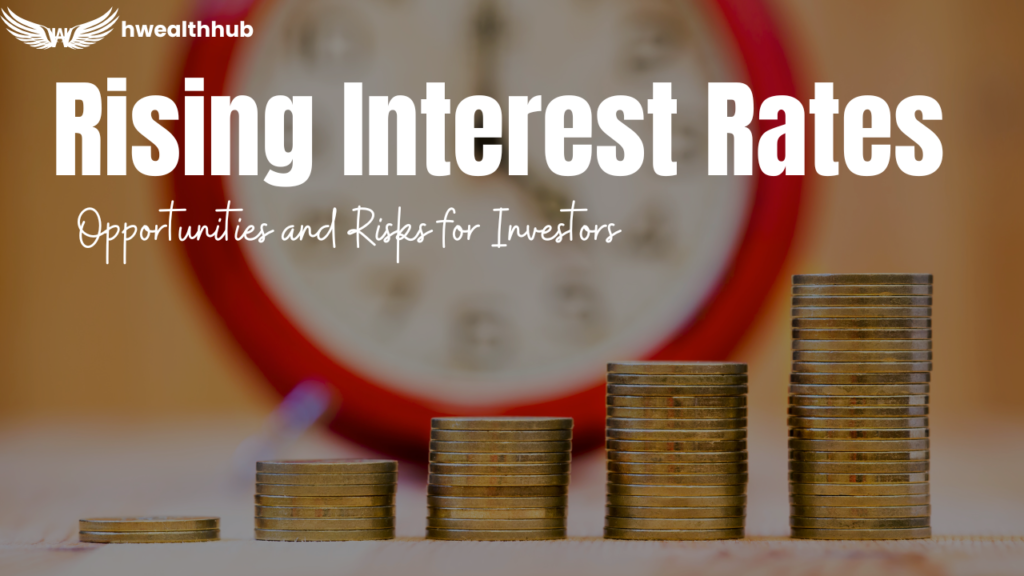In recent years, global economies have seen interest rates rise steadily, driven by efforts to combat inflation and stabilize financial systems. Central banks such as the Federal Reserve and the Reserve Bank of India have implemented rate hikes to control rising prices and maintain economic balance.
This trend holds important implications for personal finance and investment strategies. Higher interest rates affect everything from savings and loans to the performance of various investment assets. Understanding these dynamics is critical to navigating opportunities and effectively managing risks in today’s financial landscape.
Effects on Borrowing
Rising interest rates directly impact the cost of borrowing, driving up loan and mortgage rates. This makes it more expensive for consumers and businesses to borrow. Homebuyers may face an increase in monthly payments on mortgages, while individuals with variable-rate loans such as personal loans or credit cards may see a significant increase in their interest obligations.
Tips for managing debt during rising rates
- Refinance debt: Consider refinancing existing debt into fixed-rate loans to avoid further rate hikes.
- Pay off high-interest debt: Focus on repaying credit card debt and other high-interest obligations to reduce financial stress.
- Borrow wisely: Avoid unnecessary borrowing and assess the long-term cost implications of any debt.
- Build an emergency fund: Having a financial buffer can help reduce reliance on debt during emergencies.
Adopting these strategies can help ease the financial burden of rising borrowing costs and safeguard your financial stability.
Effect on savings
Rising interest rates offer significant benefits to savers, as they lead to increased returns on fixed deposits and savings accounts. Banks and financial institutions typically raise interest rates on these instruments, making them a more attractive option for individuals looking to grow their wealth safely.
Benefits of higher interest rates:
- Better fixed deposit returns: Fixed deposits become more rewarding, with higher guaranteed returns over the chosen tenure.
- Boost to savings accounts: Savings accounts also see a hike in interest rates, offering better monthly or quarterly returns on idle funds.
How to optimize your savings strategies:
- Consider laddering fixed deposits: Spread your fixed deposit investments across different maturities to lock in higher rates over time while maintaining liquidity.
- Use high-yield savings accounts: Switch to banks or digital platforms that offer competitive rates for savings accounts.
- Stay updated on rate changes: Monitor your bank and central bank announcements to take advantage of favorable deposit rates.
- Explore alternative fixed-income options: Beyond fixed deposits, consider government bonds or Treasury bills, which also benefit from higher interest rates.
By taking advantage of these strategies, savers can maximize the benefits of a higher-interest rate environment, ensuring their funds grow more effectively.
Investment strategies
Rising interest rates can significantly impact different asset classes, requiring investors to adapt their strategies to effectively navigate the changes. Here’s a breakdown of the impact on stocks, bonds and real estate, as well as defensive strategies to mitigate the risks:
Impact on asset classes:
1.Stocks:
- Sectors to watch: Rising rates typically weigh on growth stocks (e.g., tech) due to higher borrowing costs and lower future cash flow value. However, financial stocks such as banks and insurance companies may benefit from better margins.
- Volatility: Rate hikes often lead to market volatility, requiring a focus on stable and dividend-paying stocks.
2.Bonds:
- Price decline: Bond prices fall when interest rates rise because new bonds offer better yields, making existing bonds less attractive.
- Short-term bonds: Consider short-term bonds or bond funds, which are less sensitive to rate hikes.
3.Real estate:
- Higher mortgage costs: Rising rates raise borrowing costs, cooling demand for real estate and potentially slowing price growth.
- Investment trusts: Real estate investment trusts (REITs) with strong fundamentals can still provide steady income.
Defensive investing strategies:
1,Diversification:
- Spread investments across asset classes and sectors to reduce risk.
2.Focus on value and dividends:
- Turn toward value stocks and companies with consistent dividend payments for stability.
3.Increase cash reserves:
- Keep some funds in cash or liquid assets to capitalize on opportunities during market corrections.
4.Short-term and inflation-protected bonds:
- Treasury inflation-protected securities (TIPS) or short-term bonds offer better stability during rising rate periods.
5.Evaluate real estate opportunities carefully:
- Look for markets with strong rental yields or long-term growth potential to counter borrowing cost challenges.
By employing these strategies, investors can minimize risk while looking for opportunities to grow their portfolios in a rising interest rate environment.
Opportunities in the market
Rising interest rates, while presenting some challenges, also bring a variety of opportunities for investors to grow their portfolios. Here’s how:
1. Money market funds:
- What they are: These are short-term debt investments that offer stability and liquidity.
- Benefits: Rising rates improve the yields of money market funds, making them an attractive option for conservative investors.
- Where to invest: Look for funds with low expense ratios and high credit quality.
2. Government bonds:
- Treasury bonds (T-bills): As rates rise, newly issued bonds offer higher yields, making them attractive to risk-averse investors.
- Inflation-Protected Securities: Treasury inflation-protected securities (TIPS) offer protection against inflation, ensuring real returns in a high-rate environment.
- Diversification: Government bonds provide a safe haven to balance riskier investments.
3. High-Dividend Stocks:
- Attractive Yields: Companies with strong financials and a history of paying dividends become more attractive during rate hikes.
- Steady Income: Dividend-paying stocks provide regular income and can offset losses from other volatile investments.
- Sectors to Focus on: Utilities, healthcare, and consumer goods often remain resilient in rising rate scenarios.
By taking advantage of these investment avenues, you can turn the challenges of rising rates into profitable opportunities, ensuring both growth and stability in your financial journey.
FAQs
1. Why do central banks raise interest rates?
Central banks raise interest rates to manage economic stability. The main reasons include:
- Controlling inflation: Higher rates reduce spending and borrowing, which helps curb inflation.
- Encouraging savings: Increased rates encourage savings by offering better returns.
- Economic balance: To keep the economy from overheating and maintain long-term growth.
2. How can I adjust my portfolio during rising interest rates?
- Diversify investments: Include sectors that perform well in high-rate environments, such as utilities and consumer staples.
- Choose shorter-term bonds: They are less sensitive to rate hikes than longer-term bonds.
- Focus on dividend stocks: Look for high-quality companies that pay consistent dividends.
- Explore alternative investments: Consider real estate investment trusts (REITs) or commodities for added stability.
Actively adjusting your portfolio can help mitigate risk and capitalize on opportunities during rising interest rate periods.
The Bottom point
Navigating the impact of rising interest rates requires careful preparation and adaptability. By staying informed and adjusting your financial strategies, you can manage potential risks and capitalize on investment opportunities. Whether through diversifying your portfolio, adjusting debt management strategies or optimizing savings, being proactive in your financial planning will help you cope with economic changes. Remember, flexibility and an informed approach are the keys to long-term financial success during a period of rising interest rates.

